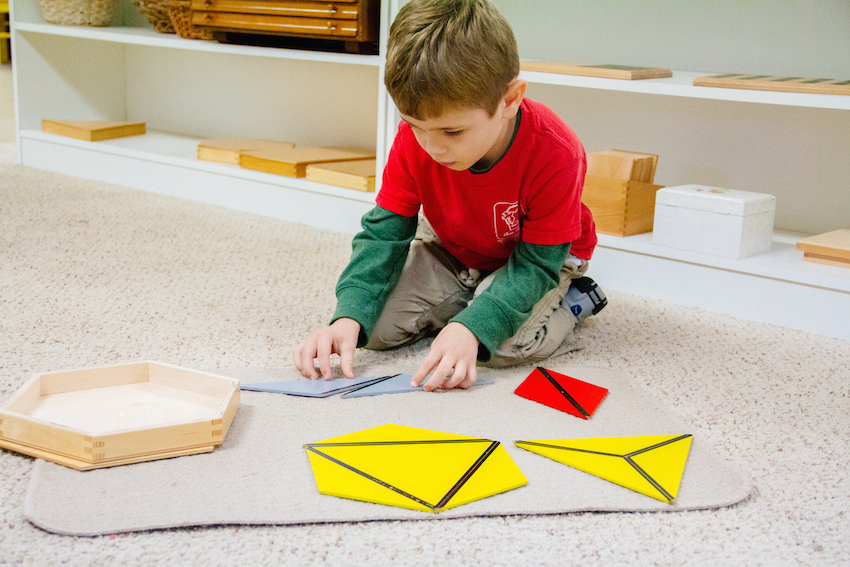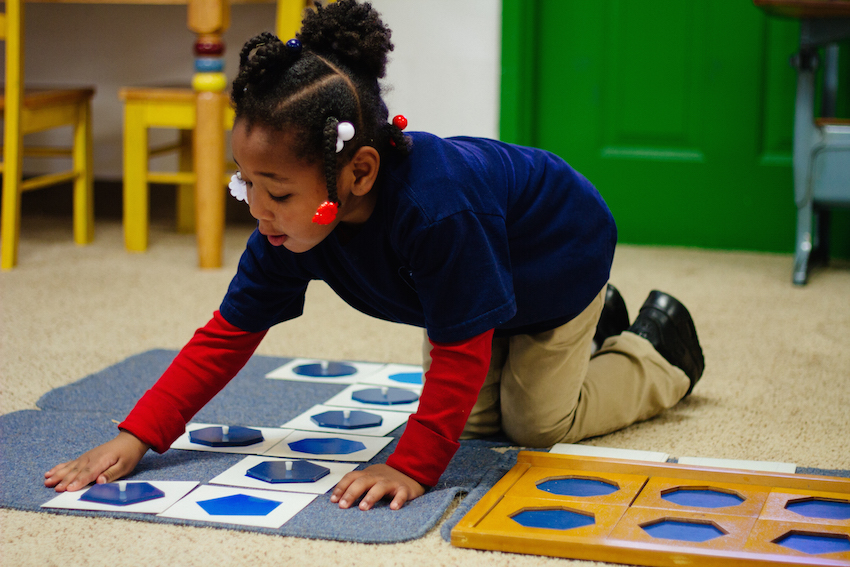“The things he sees are not just remembered; they form a part of his soul.” ~Maria Montessori
Sensorial is regarded the second foundational area of the Montessori classroom. Equipment and exercises based in the senses help the child become aware of and value detail. The child learns by using his sensory experience to discriminate differences pertaining to:
- Dimension
- Height
- Length
- Width
- Series
- Form
- Sound
- Tones of Voice
- Texture
- Smell
- Taste
- Temperature

These areas of exploration refine a child’s senses for observations of the physical world, enable the child to distinguish and categorize new information, and relate such information to what they already know. The Sensorial materials prepare the child’s mind for later mathematical concepts, develop spatial skills, and enrich vocabulary and conceptual thinking. Children also work with sensorial materials that help them isolate qualities found in nature and learn how to describe them. For example, specially prepared globes isolate single concepts of study like land and water.

Sensorial Sequence
- Dimensions: Length, Width, Height
- Colors Grading
- Geometric Shapes and Solids
- Tactile Discrimination
- Auditory Discrimination
- Olfactory Discrimination